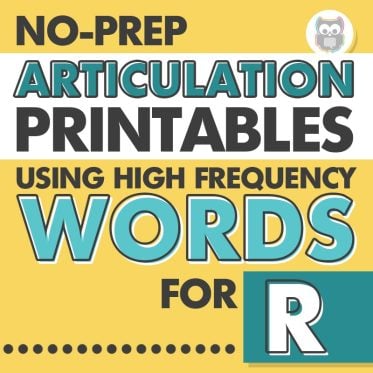Affixes are one of my favorite therapy targets for school age and middle school age students in speech and language therapy!
You can even listen to a FREE hour long podcast interview I did all about morphology here!

It is essential to introduce kids to affixes that are both common and functional. Let’s dive into my personal top 10 list of affixes that your students will hear, read, and need to know often! 👇
With each affix, I’ll share a quick and easy activity you might be able to use in your therapy sessions!
1. Dis-:
- Examples: Disagree, Dislike, Disconnect
- Activity Idea: Do a voting activity where students can vote whether they like or dislike something, or agree or disagree with a statement. Even better if they can practice using the words (like/dislike or agree/disagree).
2. Re-:
- Examples: Restart, Rebuild, Rewrite
- Activity Idea: “Re- Story Relay” where your students take turns, one student at a time for 1-2 sentences at a time. Together, they build a (usually silly) story using as many “re-” words as possible.
3. Un-:
- Examples: Untie, Unwell, Unhappy
- Activity Idea: “Un- Bingo” where your students name opposites of given words using the “un-” prefix. For example, if a student lands on “happy” they have to label and define “unhappy”.
4. Over-:
- Examples: Overeat, Overjoyed, Overlook
- Activity Idea: “Over- Illustration” where kids draw what words with the “over-” prefix mean, and boost their understanding through visualization. You could even have them close their eyes and imagine what it might feel like (in their body) to be overfull, or overexcited, or overtired.
5. In-:
- Examples: Inactive, Incomplete, Inside
- Activity Idea: Because this affix has two common meanings (“not” and “in”), your students can sort words based on which meaning they use. For example, “inactive” meants “not active” so they would put it in the “not” pile, while in the word “indoors”, “in” literally means “in”.
6. -s:
- Examples: Cats, Books, Cars
- Activity Idea: “-s Scavenger Hunt,” where your students find, identify, and list plural objects in the room.
7. -ly:
- Examples: Quickly, Happily, Loudly
- Activity Idea: “-ly Adverb Drama,” where children act out actions according to adverbs ending in “-ly,”. I really emphasize the world DRAMA with this one, which can be really fun and goofy!
8. -ing:
- Examples: Running, Singing, Jumping
- Activity Idea: “-ing Action Charades,” where my students enact words ending with “-ing,”. I often do this as a quick “brain break”. Sometimes I’ll have my students tell me what each other did to practice the verbs once again! For example, “Shannon was jumping. Nathan was whispering. Jamarius was smiling.”
9. -ed:
- Examples: Jumped, Played, Danced
- Activity Idea: I play a simple game where one student acts out a verb (oftentimes from a word bank of ‘regular verbs’) and the other students label what they did using past tense (e.g., “You jumped.” or “You danced.”
10. -est:
- Examples: Fastest, Strongest, Happiest
- Activity Idea: “-est Award Ceremony,” where kids nominate and award each other for possessing various “-est” qualities including fastest, happiest, kindest, funniest, etc…
Improving your students’ understanding of these fundamental affixes can give them another tool when approaching unfamiliar word, hopefully increasing their confidence and curiosity while increasing their overall understanding, too!
One resource I love to refer to when thinking about functional and common affixes is this one from Scholastic.
If you want to see example goals related to morphology and affixes, click here.
For printables and activities that make these types of affix activities easy to implement, check out my Prefix and Suffix Activities resource. 👇
And if you’re interested in seeing some affix activities related to weather 🌪️, you can sign up for my email newsletter below to get a free sample:




















I love working on morphology too! I like to work on the ones that are the most used. There are 4 prefixes that account for 97 percent of prefixed words in printed school English. So therapy time is short and we have lots of areas of need. I like to focus on those four: in/im/il/ir; un, dis, re. I made a quizlet deck for them here https://quizlet.com/488781611/4-most-common-prefixes-flash-cards/. The same thing for suffixes: four of them account for 97 percent of suffixed words in printed school English: -ed, -ing, -ly, -s/-es.